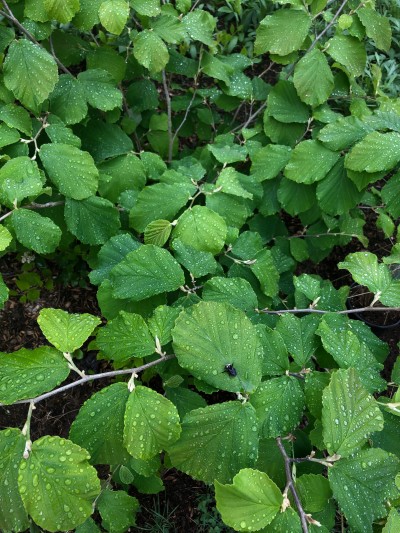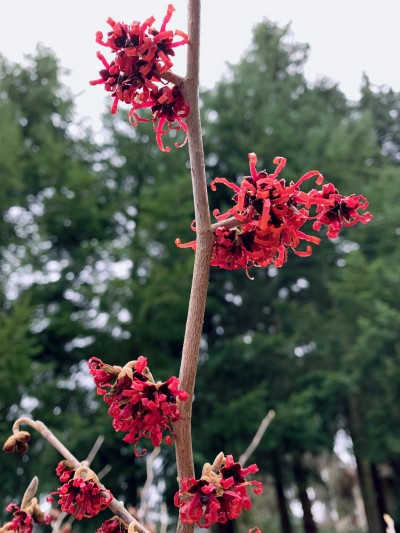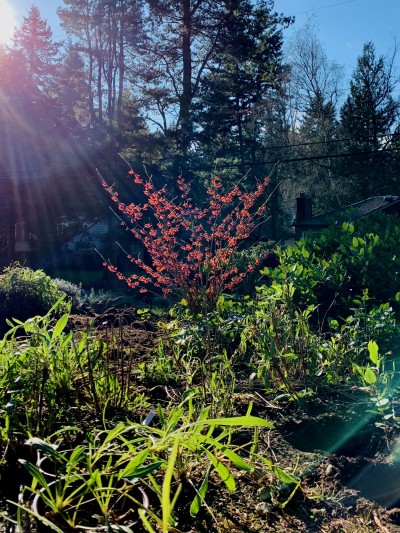
Centered in the front yard, the slender, straight branches angle upward over a patch of salal.
Overstory
In the fall, the leaves bleed their color as if experimenting with dyes. In winter, the flowers pop like crinkly paper fireworks and hang around for a month. The rest of the year, it’s full of fuzzy, large leaves that hang on straight angles. Branching out a few inches above the ground, it spreads over a mound of salal and it almost always looks good.
And that’s its only real claim: looks. Birds hop along the branches in winter and poke around at the flowers, and some insects relax on the large leaves, but it offers nature little more than that.
This vase-shaped shrub falls within a group of plants I purchased after taking a deciduous identification course—my first horticulture class at the college level. I had the urge to buy several plants that I saw during class, to better understand their growth. This was before I made any commitment to a yard that did more than look nice.
Being a hybrid—of Chinese and Japanese witch-hazels—it sends up several shoots from the graft point, close to the ground. It’s a rather annoying thing to correct, as the shoots need to be cut off a couple times during the year. Perhaps they’ll subside. If not, this is a perfect example of why you might want to leave ornamental plants in a book.
Details
Origin
Asia; Japan, China
Size
After five years, it’s about five feet high with a wider reach. Appears to spend equal energy developing interior branches as it does on it’s overall size. (March 2021)
Benefits
Not much, other than for human eyes. In winter and early spring it provides scaffolding for talkative birds. The flowers in January make it obvious why “winter-interest” is such a popular phrase.
Family
Hamamelidaceae
Relatives in the Yard
None listed (yet)



